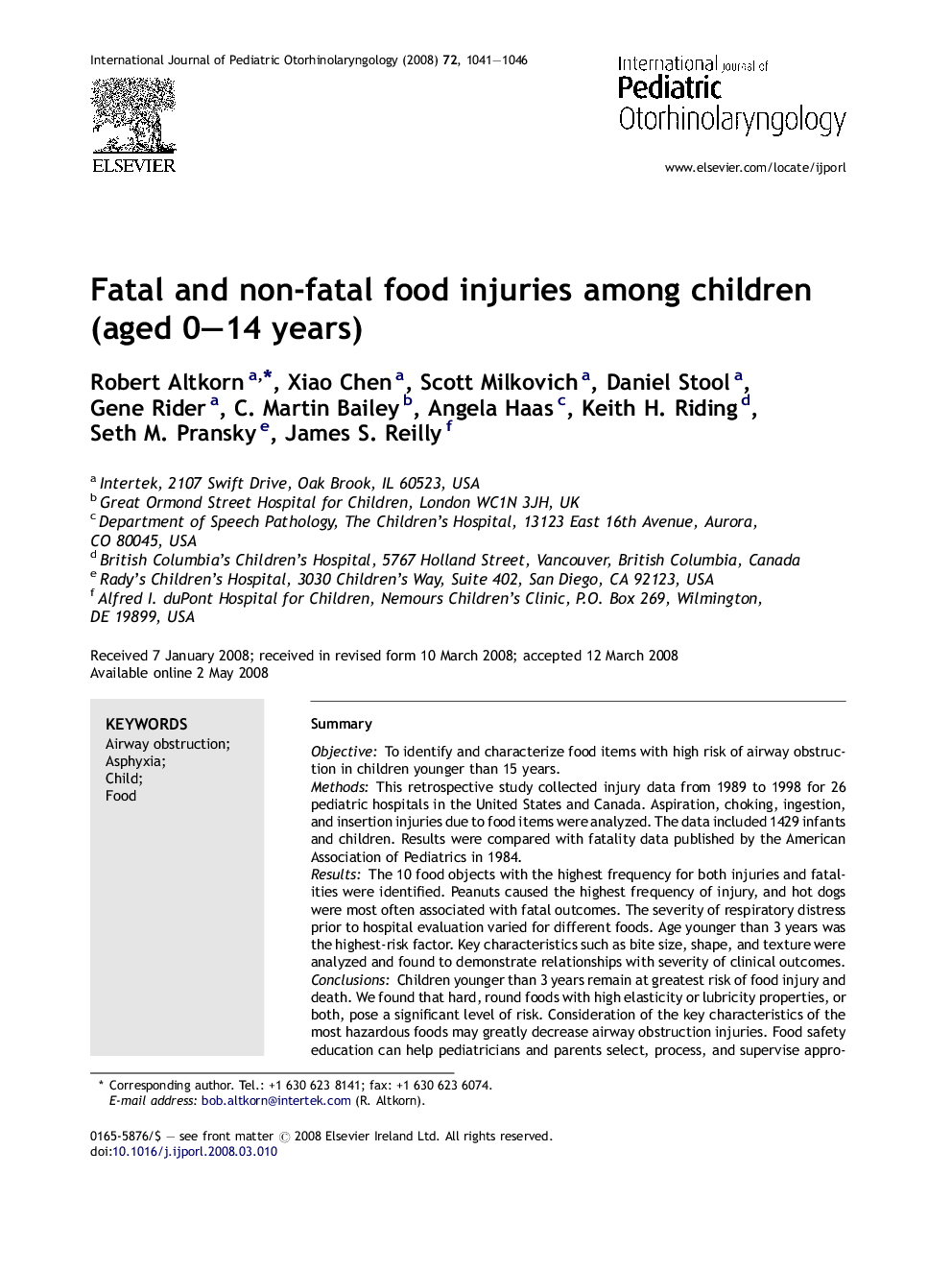| Article ID | Journal | Published Year | Pages | File Type |
|---|---|---|---|---|
| 4115038 | International Journal of Pediatric Otorhinolaryngology | 2008 | 6 Pages |
SummaryObjectiveTo identify and characterize food items with high risk of airway obstruction in children younger than 15 years.MethodsThis retrospective study collected injury data from 1989 to 1998 for 26 pediatric hospitals in the United States and Canada. Aspiration, choking, ingestion, and insertion injuries due to food items were analyzed. The data included 1429 infants and children. Results were compared with fatality data published by the American Association of Pediatrics in 1984.ResultsThe 10 food objects with the highest frequency for both injuries and fatalities were identified. Peanuts caused the highest frequency of injury, and hot dogs were most often associated with fatal outcomes. The severity of respiratory distress prior to hospital evaluation varied for different foods. Age younger than 3 years was the highest-risk factor. Key characteristics such as bite size, shape, and texture were analyzed and found to demonstrate relationships with severity of clinical outcomes.ConclusionsChildren younger than 3 years remain at greatest risk of food injury and death. We found that hard, round foods with high elasticity or lubricity properties, or both, pose a significant level of risk. Consideration of the key characteristics of the most hazardous foods may greatly decrease airway obstruction injuries. Food safety education can help pediatricians and parents select, process, and supervise appropriate foods for children younger than 3 years to make them safer for this highest-risk population.
